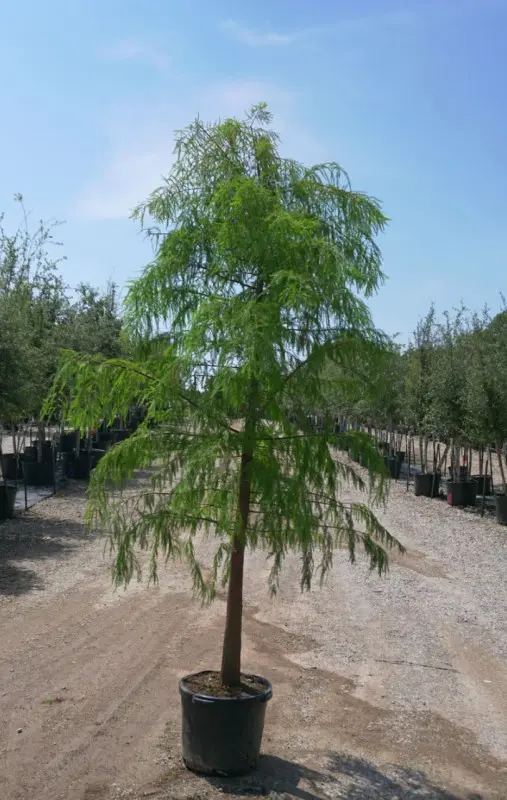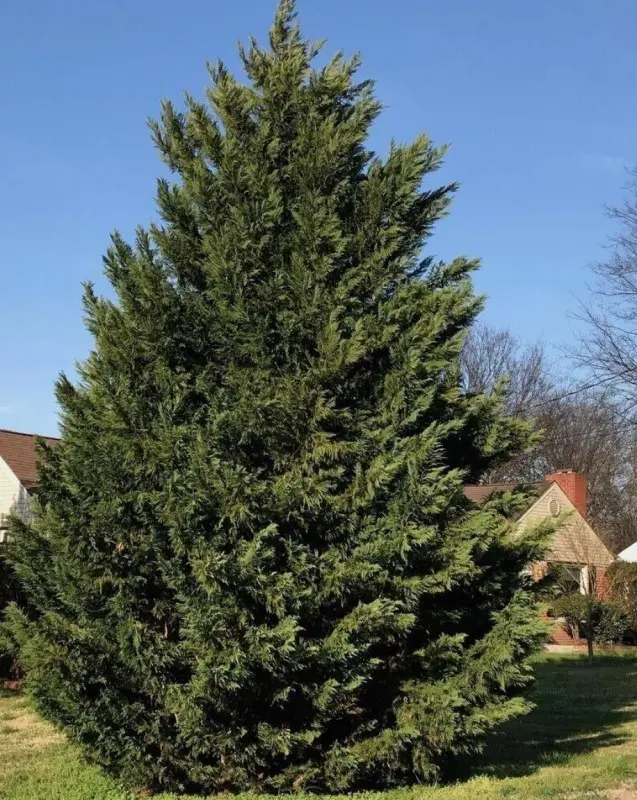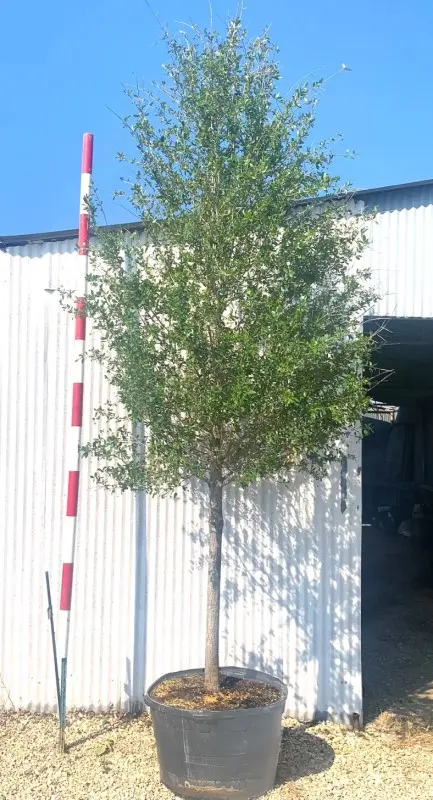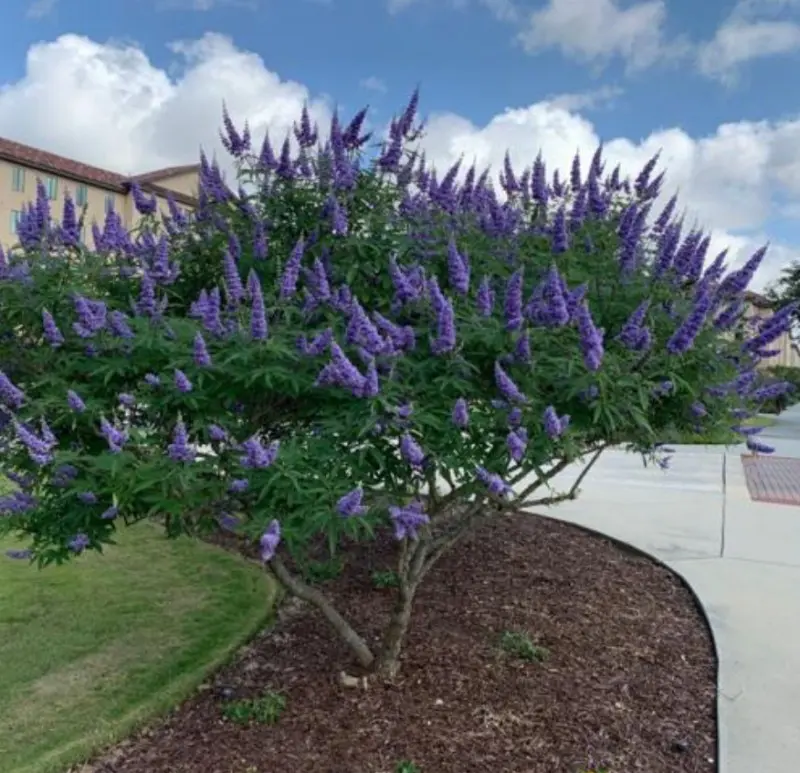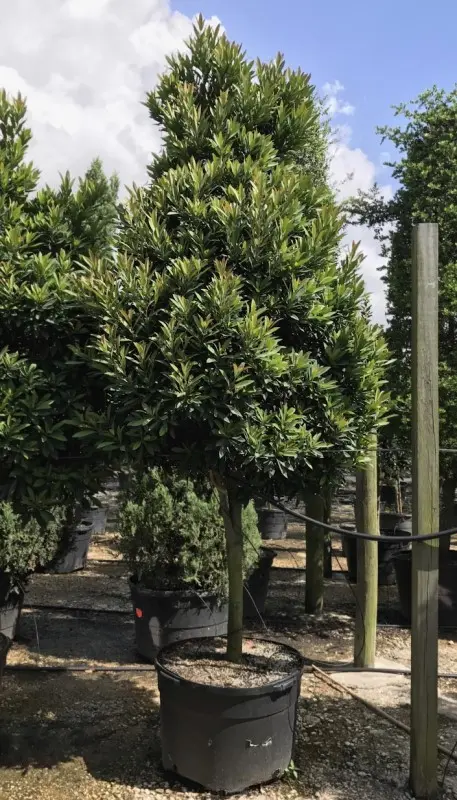Description
Bald Cypress (Taxodium distichum) is a tall, deciduous conifer native to the southeastern United States, particularly thriving in swampy and riverbank areas. Known for its elegant, feathery foliage and striking form, the Bald Cypress sheds its needle-like leaves in the fall, turning a warm copper-orange before dropping—a unique characteristic among conifers, which is why it is called “bald.” The tree’s bark is reddish-brown and fibrous, adding a textured visual interest year-round, while its root system often produces “knees”—woody projections that rise above the soil or water surface, helping stabilize the tree in wet environments.
Bald Cypress typically grows 50 to 70 feet tall, though it can reach up to 100 feet in ideal conditions, with a spread of about 20 to 30 feet. This long-lived tree can thrive in USDA zones 4-10 and tolerates both wet and dry soils, making it surprisingly adaptable. While Bald Cypress is commonly found in swampy areas and along riverbanks, it can also thrive in well-drained soils and urban landscapes if provided with adequate water, particularly in its early years.
Low-maintenance and pest-resistant, Bald Cypress requires little pruning and can adapt to various soil types, including clay, sand, and acidic soils. It grows well as a specimen tree or in groups along water features, in large landscapes, or as a unique addition to residential gardens where space allows. With its distinctive foliage, unique “knees,” and adaptability, Bald Cypress offers year-round interest and adds a stately, natural look to landscapes, particularly in wetland or coastal areas.

